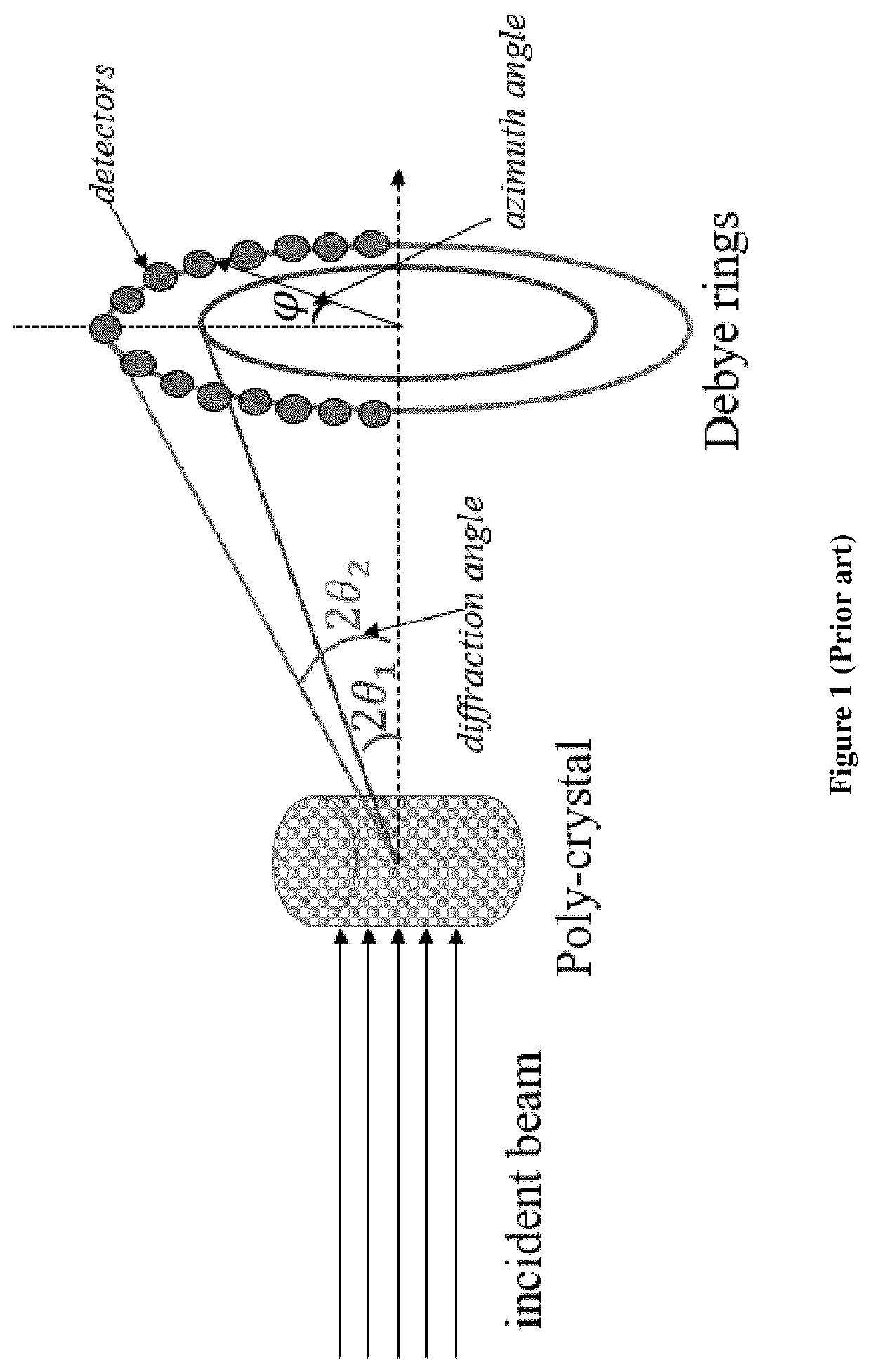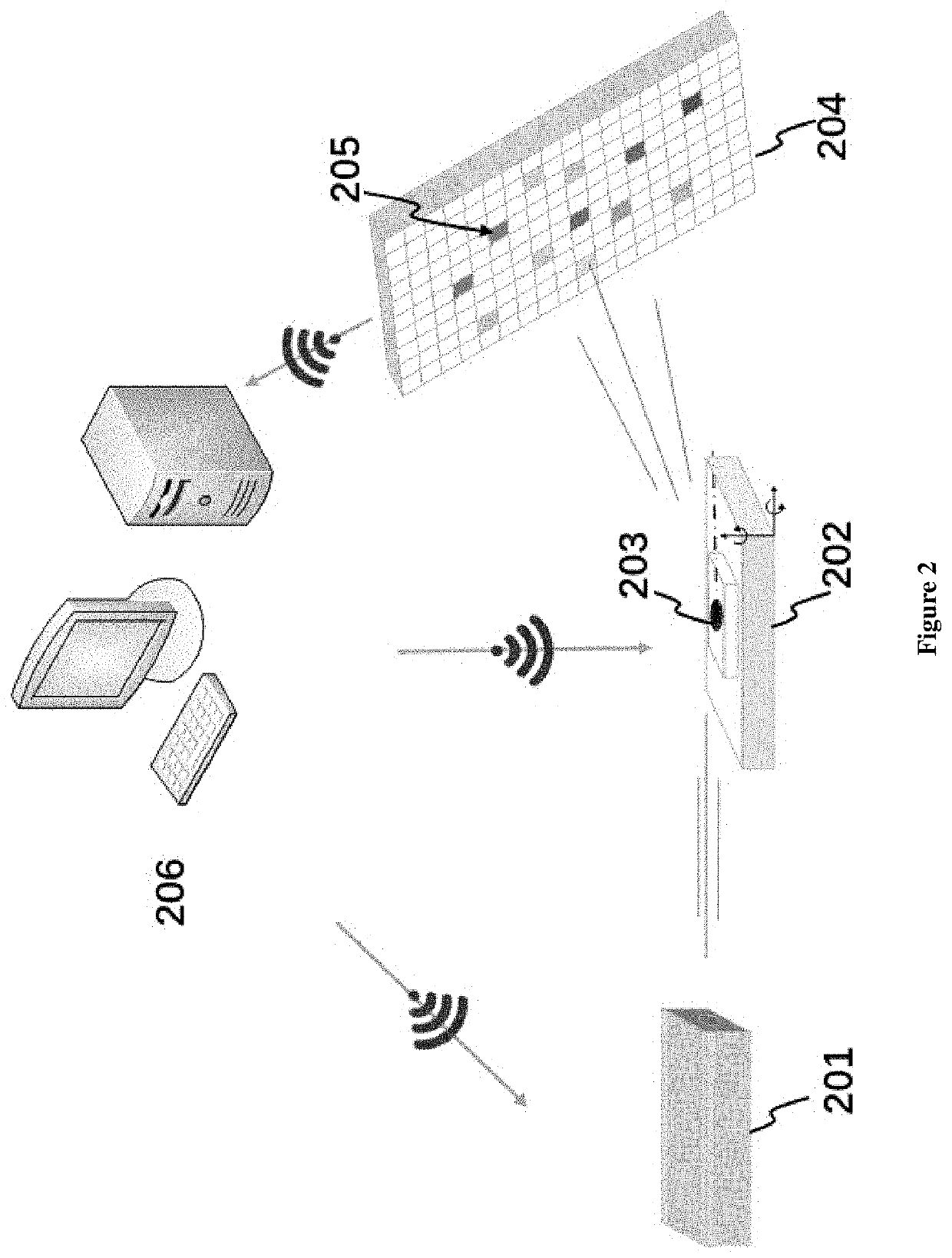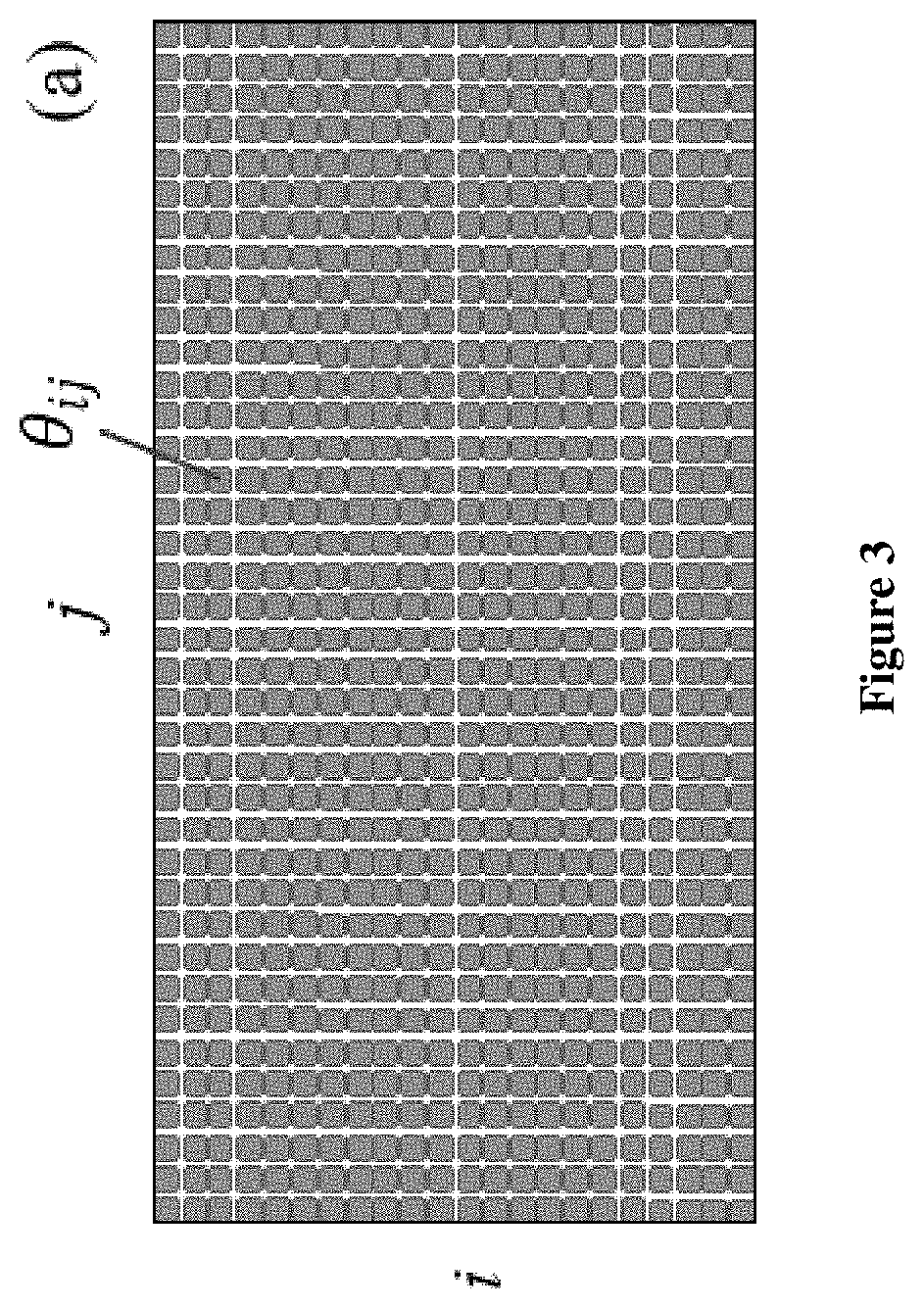X-ray diffraction and x-ray spectroscopy method and related apparatus
a technology of x-ray spectroscopy and diffraction, which is applied in the field of x-ray fluorescence spectroscopy, can solve the problems of limiting the number of available detectors, wasting most of the diffraction signal as well, and the signal of current xrf technologies with single or multiple energy dispersive detectors is relatively weak, so as to achieve enhanced spectroscopy spectrum and enhanced diffraction spectrum
- Summary
- Abstract
- Description
- Claims
- Application Information
AI Technical Summary
Benefits of technology
Problems solved by technology
Method used
Image
Examples
first embodiment
[0039]The X-ray source 201 of the current embodiment is a bending magnetic in a synchrotron radiation facility with energy range from 4 keV to 30 keV. The sample stage 202 is a multi-axis stage which can be used to mount powder, poly-crystal CeO2 sample. The detector 204 is a two-dimensional energy dispersive detector combined by 11*11 SDD detectors. Each SDD detector is Amp-TEK X123 with active are 17 mm2. The best energy resolution of this detector is about 125 eV. The center pixel is locating at diffraction angle 29° with the distance from sample 650 mm. So the diffraction angles of pixels are in the range from 23° to 34° . FIGS. 5, 6 and 7 show the experiments results and data processing of this embodiment.
[0040]Each pixel of the detector collects one energy dispersive spectrum Î(E). FIG. 5(a) shows the combined energy dispersive spectrums ÎÎ(E, θij) with energy as horizontal axis and diffraction angle as vertical axis. It can be found in FIG. 5(a) that the location of some peak...
second embodiment
[0043]The X-ray source 201 of the current embodiment is preferably a bending magnetic in a synchrotron radiation facility or a rotating anode laboratory X-ray source to produce white X-ray beam with an energy range from 4 keV to 35 keV. The incident angle of the white X-ray beam with respect to the horizontal plane of the sample stage is preferably from 5° to 10°. The sample stage 202 is a multi-axis stage which can be used to mount powder, poly-crystal and single crystal samples. In one example, the detector 204 is a two-dimensional energy dispersive detector (such as a pnCCD detector or SDD arrays from PNDetector, Germany) covering an area of 300×300 mm2 with a pixel size 75×75 um2 and an energy resolution around 150 eV. By setting the open angle of pixel Δθ≈0.06°, the distance D between the detector and the sample and the pixel size l satisfy the relationship D=l / Δθ≈103·l which means that a two-dimensional energy dispersive detector with a pixel size 75 um should be located at di...
PUM
| Property | Measurement | Unit |
|---|---|---|
| diffraction angles 2θ | aaaaa | aaaaa |
| diffraction angles 2θ | aaaaa | aaaaa |
| diffraction angles 2θ | aaaaa | aaaaa |
Abstract
Description
Claims
Application Information
 Login to View More
Login to View More - R&D
- Intellectual Property
- Life Sciences
- Materials
- Tech Scout
- Unparalleled Data Quality
- Higher Quality Content
- 60% Fewer Hallucinations
Browse by: Latest US Patents, China's latest patents, Technical Efficacy Thesaurus, Application Domain, Technology Topic, Popular Technical Reports.
© 2025 PatSnap. All rights reserved.Legal|Privacy policy|Modern Slavery Act Transparency Statement|Sitemap|About US| Contact US: help@patsnap.com



